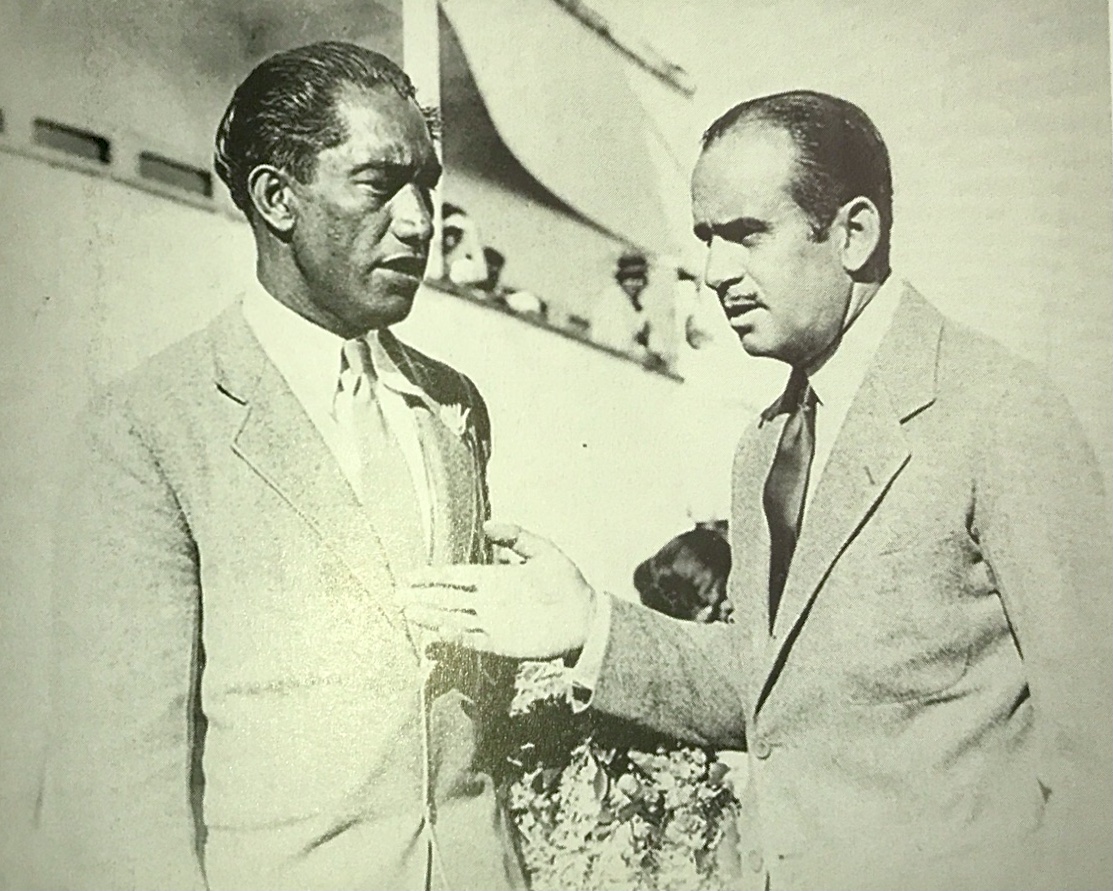Have you heard of or seen the film “Around the World in Eighty Minutes”?
Directed by Douglas Fairbanks Sr. in collaboration with Victor Fleming, the movie follows Fairbanks and a crew of three as they embark on a journey around the globe.
The narrative captures their exploration of various cultural curiosities and the humor they encounter in everyday life abroad.
They started in Japan, Fairbanks focuses on the local populace, capturing a scene in which a Japanese woman demonstrates how her maids assemble her elaborate headdress. The journey then leads him and his crew to China, where they are welcomed by one of the nation’s most renowned actors, the female impersonator Mei Lanfang. Their travels take them to significant landmarks such as the Forbidden City in Peking, the tomb of Dr. Sun Yat-sen, and the vibrant city of Hong Kong. During this voyage aboard the ocean liner Belgenland, Fairbanks showcases his athletic physique through deck drills and is also seen engaging in a game of golf.
In Indochina, the Maharanee of Cooch-Behar provides Fairbanks with fifty elephants and attendants for a jungle expedition aimed at hunting leopards.
In the Philippines, he captures footage of former President Emilio Aguinaldo, who poses and speaks for the camera. Following his passage through Cambodia and Bangkok, Fairbanks concludes his journey in Siam, where he attends a gathering at the estate of the King of Siam, mingling with numerous foreign dignitaries.
However, amidst all the countries visited, it is noteworthy that Hawaii and Duke Kahanamoku were not mentioned, which struck me as peculiar.
I recall watching a video featuring Douglas on a cruise ship, where he was serenaded. The footage transitioned to him arriving at the Royal Hawaiian Hotel in a jeep, greeted by Hawaiian women singing and presenting flower leis in anticipation of his arrival.
Upon disembarking from the jeep, the camera captured Duke from behind, likely as he walked toward the entrance, dressed in white pants and a blazer, holding a flower lei. He greeted Douglas with an enthusiastic “Aloha.”
Douglas briefly spoke before whispering something to Duke, prompting Duke to suggest they go swimming.
The subsequent scene showcased Douglas being towed by a boat while holding onto a rope, akin to being dragged on a surfboard by a speedboat. In the film, Duke surfed at Waikiki, marking one of the rare instances he was seen riding waves on the big screen. Douglas also participated, jumping off one of the boards.
When it was Duke’s turn to leap from his board, I noticed something remarkable. His entry into the water produced a loud, resounding splash, which conveyed a sense of power and intensity.
In the final footage, Douglas was seen holding his board when Duke ran over to assist him. They stood together in front of the camera, and Duke asked Douglas, “Ahu anu ‘oe?”
Initially, I misheard this phrase as “Ano anui,” which had puzzled me for a month during my research. The first time I head it was when I watched “Duke Kahanamoku, this is your life”.
Hearing it again in the footage was enlightening, especially as Douglas provided an English translation of Duke’s question.
Ahu anu ‘oe means “Are you cold?”.
Douglas Fairbanks Sr. was a pioneering actor of his time, embodying agility and a carefree attitude that represented the quintessential American male.
He held Duke in high regard, and even during a brief stop in Hawaii—likely on his honeymoon with Mary Pickford—they played golf, demonstrating his admiration.
I have come to realize that Duke holding a gold bat while surfing and standing on the beach may have been inspired by Douglas.
Though this blog post is brief, it is important to highlight Hawaii and Duke’s contributions, as this segment is often overlooked. It is only through my deeper exploration and research into Duke’s legacy that I have come to appreciate these connections.
